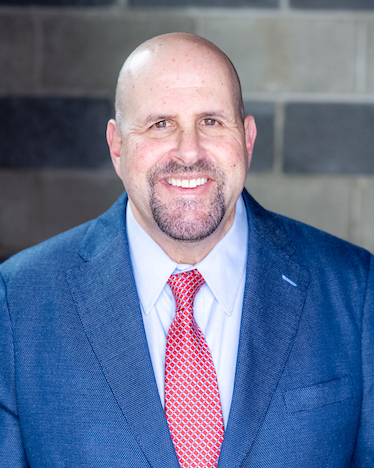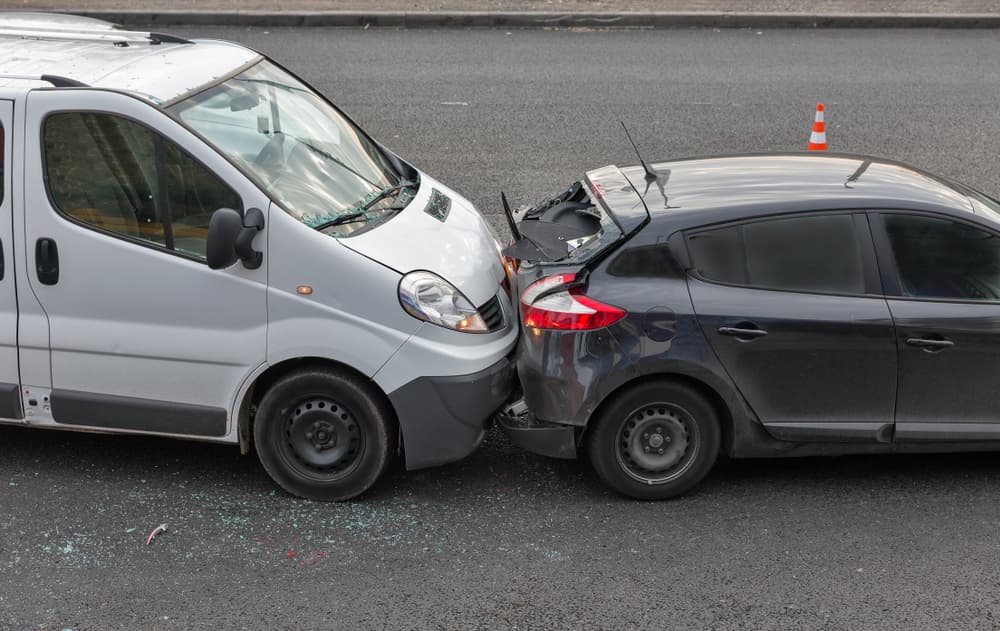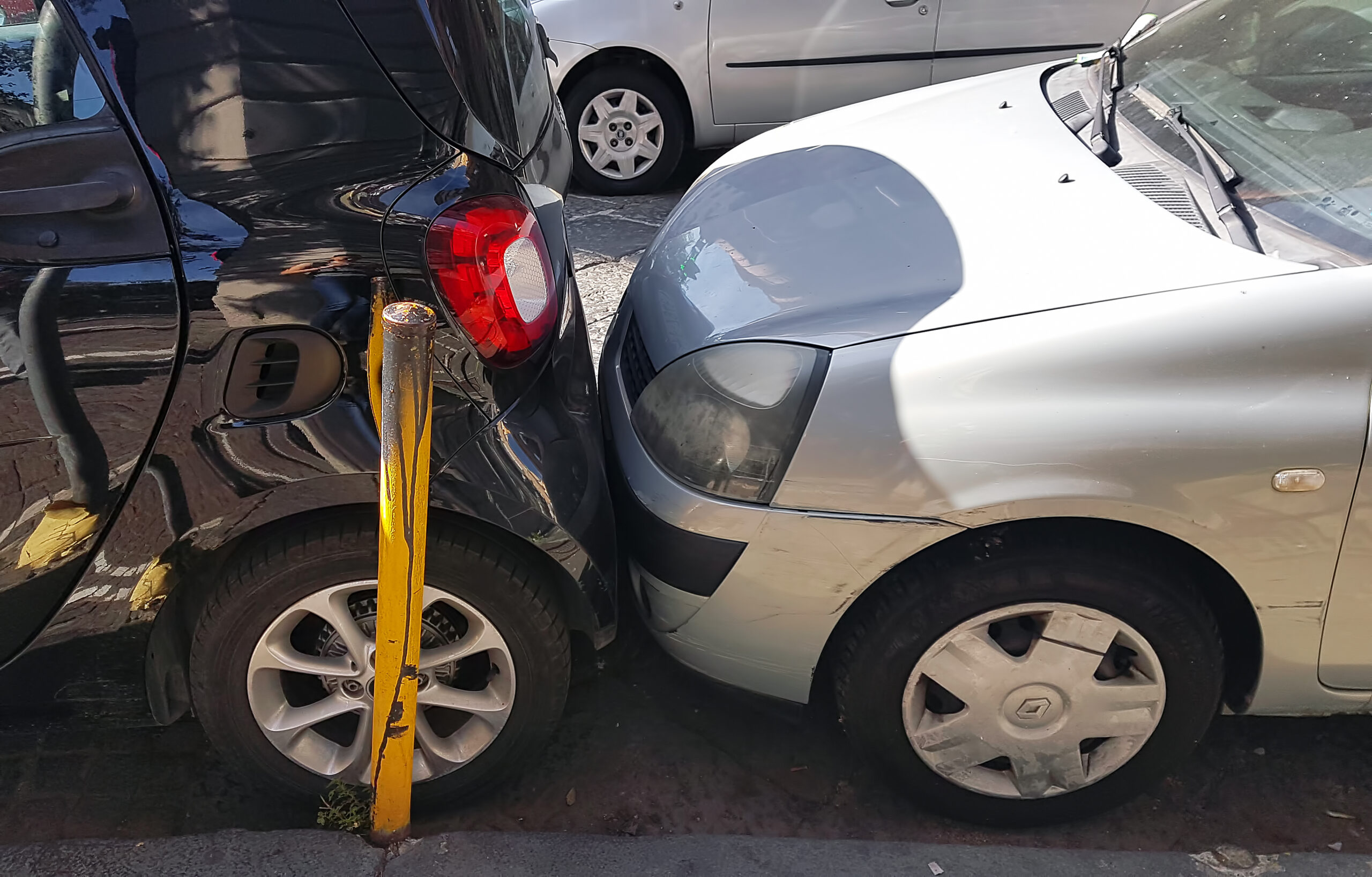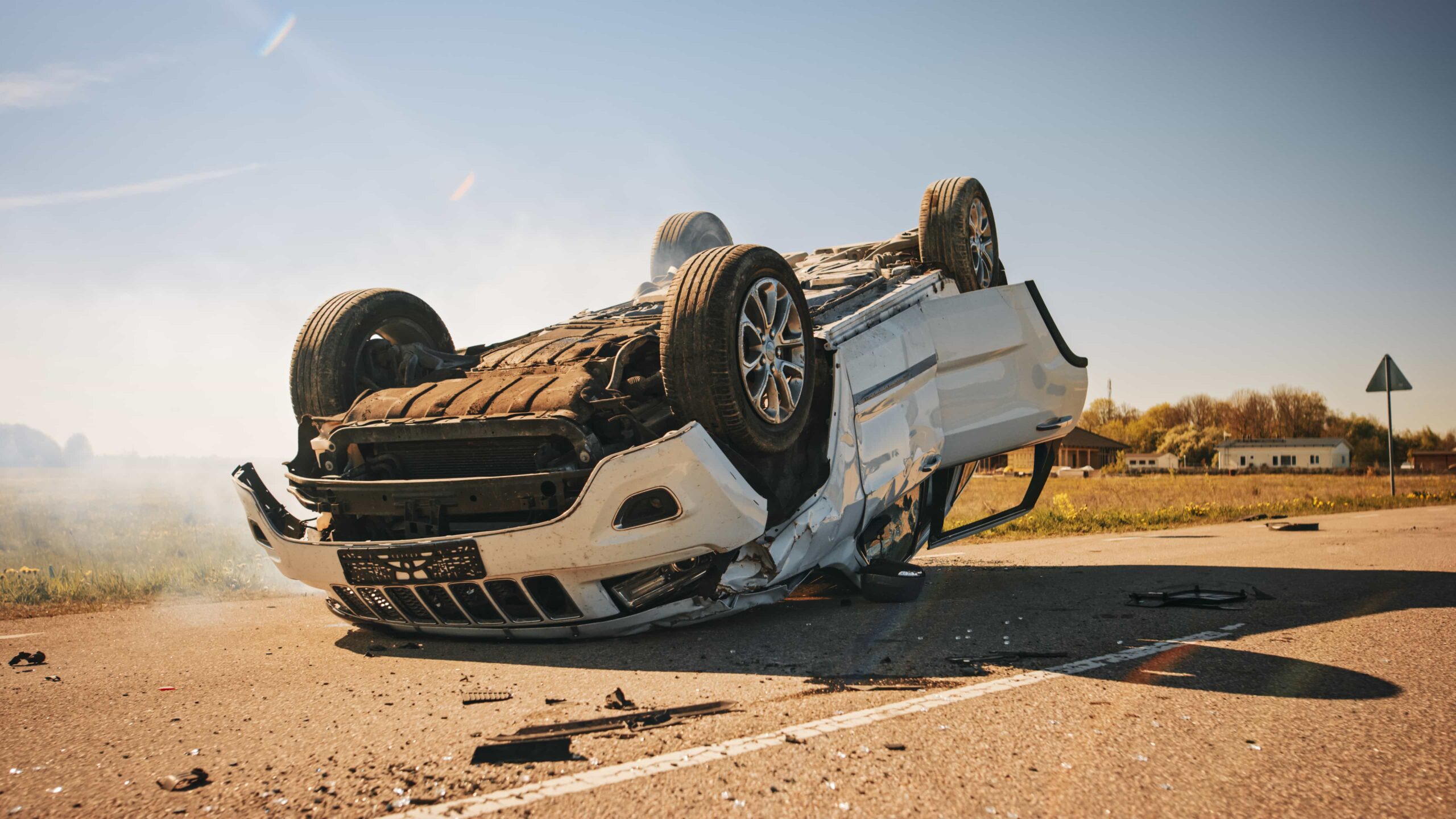Multi-vehicle accidents can involve the negligence or recklessness of several other drivers. In some cases, these accidents happen when one driver commits a negligent act, such as speeding, and a chain-reaction collision ensues. These accidents frequently result in multiple accident victims and injuries.
Suppose you suffered injuries in a recent multi-car accident that one or more negligent drivers caused.
In that case, consult a skilled Chicago motor vehicle accident lawyer in your area immediately. Your lawyer can promptly investigate the circumstances of your accident and determine your legal options for recovering the monetary compensation you need.
Most Common Causes of Accidents Involving Multiple Vehicles
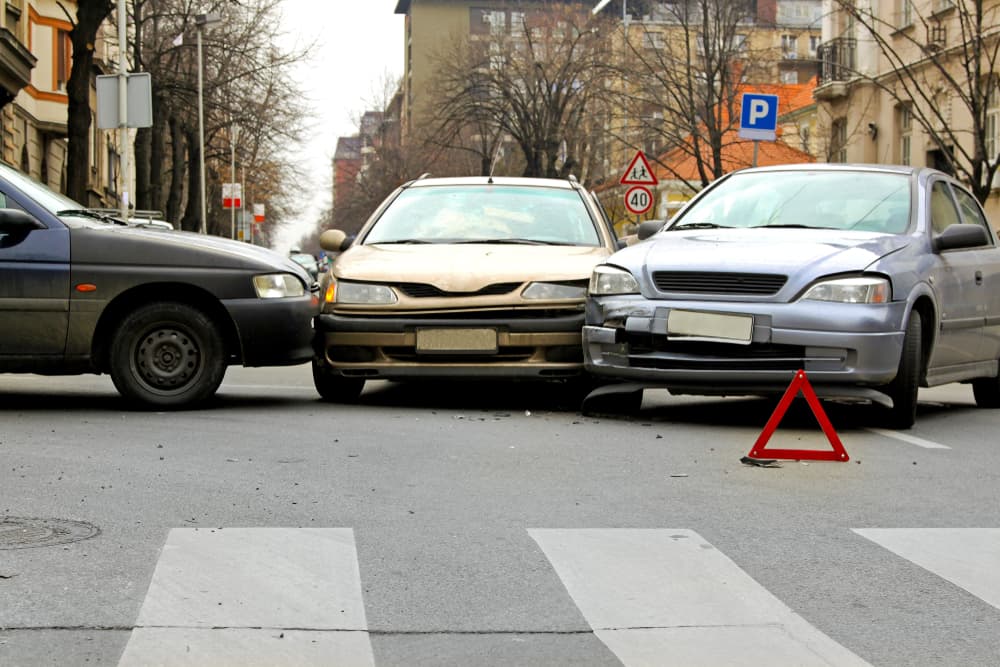
Motor vehicle accidents involving multiple vehicles often result from factors stemming from someone else's negligence:
- Distracted Driving — One of the leading causes of multi-vehicle accidents is distracted driving. Whether texting, using a phone, eating, or adjusting the radio, distractions divert a driver's attention from the road, increasing the risk of collisions.
- Reckless Driving — Aggressive behaviors such as speeding, tailgating, and frequent lane changes contribute to multi-vehicle accidents. These actions endanger the aggressive driver and create a hazardous environment for others on the road.
- Failure To Yield — Accidents often occur when drivers fail to yield the right-of-way at intersections, merge lanes without proper caution, or neglect other traffic rules, leading to collisions with other vehicles.
- Impaired Driving — Driving under the influence of alcohol or drugs significantly impairs a driver's judgment, coordination, and reaction times, leading to a higher likelihood of multi-vehicle accidents.
- Speeding — Excessive speed reduces a driver's ability to react to changing traffic conditions. Speeding contributes to more severe collisions, especially in congested areas or during adverse weather conditions.
- Weather Conditions — Adverse weather, such as rain, snow, or fog, can create hazardous driving conditions. Negligent drivers who fail to adjust speed or take appropriate precautions in adverse weather contribute to multi-vehicle accidents.
- Fatigue — Driver fatigue impairs alertness and reaction times, increasing the risk of multi-vehicle accidents. Fatigued drivers may fall asleep at the wheel, fail to maintain a consistent lane, or react slowly to changing traffic conditions.
- Failure to Obey Traffic Signals — Disregarding traffic signals, running red lights, or ignoring stop signs can lead to collisions involving multiple vehicles at intersections.
- Poor Road Conditions — Negligence in maintaining roads, such as inadequate signage, potholes, or construction hazards, can contribute to multi-vehicle accidents. Local authorities or construction companies may be liable for these issues.
- Inexperienced Drivers— Inexperienced or novice drivers may lack the skills needed to navigate complex traffic situations, increasing the likelihood of multi-vehicle accidents, especially in high-traffic areas.
Identifying and addressing these common causes of multi-vehicle accidents due to someone else's negligence can improve road safety. Victims in such accidents may pursue legal recourse to hold negligent parties accountable and seek compensation for the damages incurred.
Locations for Multi-Vehicle Car Accidents
Multi-vehicle car accidents can occur in various locations, often influenced by traffic patterns, road design, and driver behavior.
Among the most common locations for these accidents are intersections. Intersections are points where different roads intersect, creating complex traffic flows. Collisions frequently happen when drivers fail to yield the right-of-way, run red lights, or turn improperly.
Highways and expressways are also frequent settings for multi-vehicle accidents. The higher speeds on these roads and heavy traffic can result in chain-reaction collisions. Factors like sudden lane changes, tailgating, or distracted driving contribute to the complexity of highway accidents involving multiple vehicles.
Construction zones represent another location prone to multi-vehicle accidents. Reduced lane availability altered traffic patterns, and the presence of construction equipment demanded heightened attention from drivers. Failure to adjust to these conditions can lead to rear-end collisions, sideswipes, or more severe accidents.
Parking lots, though lower in speed, witness many multi-vehicle accidents. Tight spaces, obscured sightlines, and distracted driving contribute to collisions as drivers navigate parking areas. Fender-benders and sideswipes are common scenarios in these confined spaces.
Residential areas, with their mix of pedestrians, cyclists, and parked cars, can also witness multi-vehicle accidents. Speeding, failure to observe stop signs, and distracted driving can lead to collisions that involve multiple vehicles in these community settings.
Factors such as limited visibility, narrow lanes, and unexpected wildlife crossings on rural roads contribute to multi-vehicle accidents. Drivers may encounter challenges navigating these environments, leading to collisions with oncoming traffic or vehicles attempting to pass.
Traffic circles or roundabouts, designed to facilitate smoother traffic flow, can become locations for multi-vehicle accidents. Confusion about right-of-way, improper merging, or failure to yield can result in collisions involving multiple vehicles within the circular intersection.
Regardless of the location, multi-vehicle accidents often share common contributing factors, including distracted driving, impaired driving, reckless behavior, and failure to adhere to traffic rules.
Vigilance, adherence to speed limits, and cautious maneuvering in diverse driving environments can reduce the frequency of multi-vehicle accidents across various locations. Understanding the unique challenges each location presents can help drivers navigate safely and prevent the occurrence of these complex collisions.
Types of Injuries That Accident Victims May Suffer in a Multi-Vehicle Car Crash
In multi-vehicle car crashes resulting from others' negligence, individuals may sustain a range of injuries, and the severity often varies based on factors like collision impact, vehicle speed, and safety measures.
Some of the most common injuries include:
- Whiplash — A prevalent injury in multi-vehicle accidents, whiplash occurs when the head and neck suddenly jerk forward and backward, straining the muscles and ligaments. This can lead to pain, stiffness, and headaches.
- Soft Tissue Injuries — Damage to muscles, tendons, and ligaments can result in soft tissue injuries. These injuries may cause pain, swelling, and reduced mobility, affecting a person's ability to perform daily activities.
- Back Injuries — The force of a multi-vehicle collision can lead to back injuries, such as herniated discs, spinal cord injuries, or fractures in the vertebrae. These injuries can cause chronic pain, limited mobility, and, in severe cases, long-term disability.
- Fractures and Broken Bones — The impact of a multi-vehicle crash can result in fractures or breaks in various bones, including limbs, ribs, or the pelvis. Recovery from these injuries may require surgery and extensive rehabilitation.
- Head Injuries — Trauma to the head during a multi-vehicle accident can range from concussions to more severe traumatic brain injuries (TBIs). These injuries can affect cognitive function, memory, and overall neurological health.
- Internal Injuries — Blunt force trauma can cause damage to internal organs, leading to internal bleeding, organ perforation, or other complications. Prompt medical attention is crucial to address these injuries.
- Facial Injuries — Injuries to the face, including lacerations, fractures, or damage to the eyes, nose, or jaw, can occur due to impact on the airbag, steering wheel, or other objects inside the vehicle.
- Psychological Injuries — Multi-vehicle accidents can result in psychological trauma, such as post-traumatic stress disorder (PTSD), anxiety, and depression. The emotional toll can significantly affect a person's mental well-being.
- Seat Belt Injuries — While seat belts save lives, they can also cause injuries in high-impact collisions. Seat belt injuries may include bruising, chest contusions, or abdominal injuries.
- Burns and Scarring — In accidents involving fires or explosions, individuals may suffer burns, leading to scarring and long-term disfigurement. Burn injuries require specialized medical care and may necessitate ongoing treatments.
Understanding the array of injuries that individuals may suffer in multi-vehicle car crashes due to others' negligence underscores the importance of seeking prompt medical attention and pursuing legal recourse to address the physical, emotional, and financial consequences of these incidents.
How to Litigate a Car Accident Case Involving Multiple Vehicles
Effectively litigating a multi-vehicle car crash resulting from someone else's negligence requires a strategic and comprehensive approach.
The following are key steps to navigate the litigation process successfully:
- Gather Comprehensive Evidence — Collect a wide range of evidence to support your case. This includes accident reports, witness statements, photographs of the accident scene, and any available video footage. Documenting the extent of vehicle damage and injuries is crucial for establishing the repercussions of the crash.
- Obtain Medical Records — Compile detailed medical records that outline the injuries sustained in the multi-vehicle crash. Include diagnostic tests, treatment plans, and any long-term prognosis medical professionals provide. These records are instrumental in illustrating the physical toll of the accident.
- Consult Expert Witnesses — Engage professionals, such as accident reconstruction specialists, medical professionals, or engineers, to provide testimony that strengthens your case. Expert witnesses can offer insights into the accident's mechanics, the injuries' severity, and the long-term consequences.
- Establish Liability — Demonstrate how the negligence of the other party or parties involved led to the multi-vehicle crash. This may involve proving reckless driving, failure to yield, distracted driving, or other forms of negligence. Establishing liability is crucial for determining who is responsible for the damages.
- Quantify Damages — Assess the full extent of damages incurred, including medical expenses, property damage, lost income, and any non-economic damages such as pain and suffering. A thorough evaluation helps in accurately quantifying the compensation sought in the lawsuit.
- Engage in Pre-trial Negotiations — Attempt to resolve the matter through pretrial negotiations. Your attorney can engage with the opposing party's legal representation or insurance company to explore settlement options. This may lead to a favorable resolution without going to trial.
- File a Lawsuit If Necessary — If negotiations do not yield a satisfactory outcome, proceed to file a lawsuit. Prepare the necessary legal documents and initiate the litigation process. Your attorney will guide you through each step, including the discovery process, depositions, and other pre-trial proceedings.
- Build a Strong Trial Strategy — Develop a robust trial strategy leveraging collected evidence, professional testimony, and legal arguments. Present a compelling case that establishes liability and clearly outlines the damages suffered due to the multi-vehicle crash.
- Adapt During Trial — Be prepared to adapt your strategy based on developments during the trial. Respond to the arguments that the defense presents and address any challenges that may arise.
- Seek a Fair Verdict — Present your case persuasively and advocate for a fair verdict that compensates you appropriately for the damages incurred due to the multi-vehicle crash. Your attorney will play a crucial role in presenting evidence, examining witnesses, and making legal arguments during the trial.
Effectively litigating a multi-vehicle car crash necessitates meticulous preparation, a thorough understanding of the legal aspects involved, and the ability to present a compelling case in court.
An experienced personal injury attorney can navigate the complexities of the litigation process and pursue just compensation for the damages you suffered.
Financial Compensation for Injuries in Multi-Vehicle Accidents
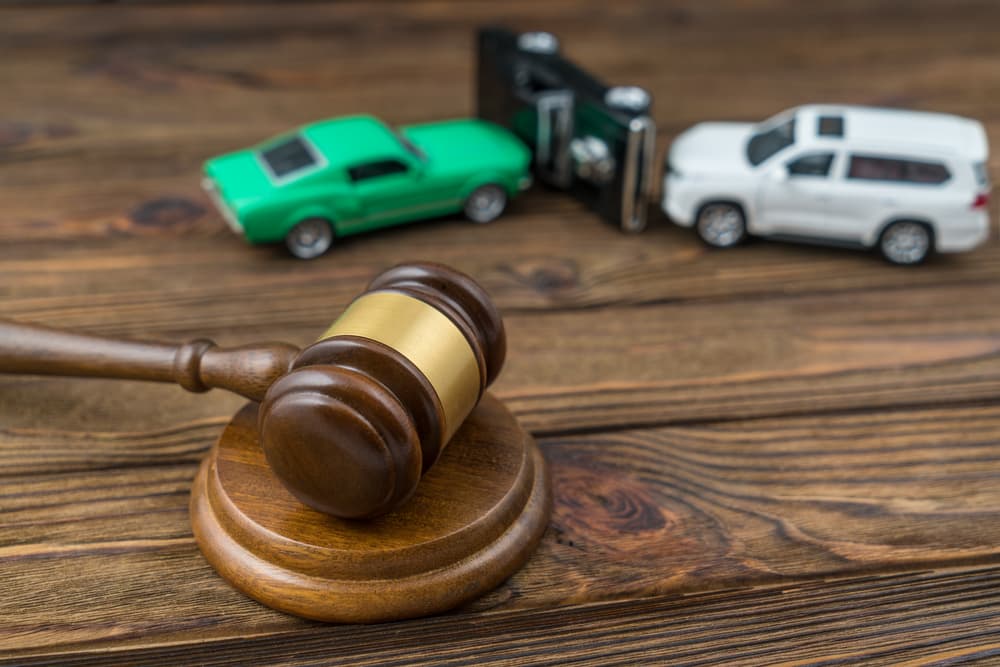
Victims of multi-vehicle car accidents resulting from someone else's negligence can seek diverse types of recoverable financial compensation to address the damages they have incurred. These compensations aim to provide financial relief for the accident's physical, emotional, and economic consequences.
For instance, recoverable financial compensation includes reimbursement for all medical expenses incurred due to injuries sustained in the multi-vehicle accident. This encompasses emergency medical care, hospitalization, surgeries, diagnostic tests, medication, rehabilitation, and ongoing medical treatments.
Future medical expenses are also compensable. If the injuries sustained in the multi-vehicle accident necessitate ongoing medical care or future surgeries, victims can seek compensation to cover these anticipated medical expenses.
In addition, victims may seek compensation for the income lost during their recovery period. This includes income lost due to missed work, inability to perform job duties, and any future loss of earning capacity resulting from accident-related injuries.
In addition, damages to the victim's vehicle and personal property are recoverable. Compensation may cover repair costs or, in cases of severe damage, the property's fair market value.
Non-economic damages, such as physical pain, emotional distress, and mental anguish, are compensable. Assigning a monetary value to pain and suffering addresses the impact of the accident on the victim's overall well-being. Loss of consortium is another non-economic damage.
In cases where the multi-vehicle accident affects the victim's relationships, recoverable compensation may include damages for loss of companionship, support, or consortium with a spouse or family member. Furthermore, suppose the victim experiences a long-term disability or impairment due to the multi-vehicle accident.
In that case, compensation may cover associated costs, lifestyle adjustments, and ongoing medical care related to the disability. Victims may also recover expenses related to rehabilitation services, including physical therapy, occupational therapy, and other forms of rehabilitation aimed at restoring functionality and quality of life.
Accident victims may also pursue compensation for psychological injuries resulting from the accident, such as post-traumatic stress disorder (PTSD), anxiety, depression, or other mental health issues requiring treatment.
Finally, in cases where the multi-vehicle accident results in a fatality, the family of the deceased may seek compensation for funeral and burial costs to alleviate the financial burden associated with these expenses.
Understanding the spectrum of recoverable financial compensation available is crucial for victims of multi-vehicle car accidents. Pursuing legal recourse with the assistance of an experienced personal injury attorney ensures that victims can comprehensively address the full range of damages they have suffered due to someone else's negligence.
The Importance of Early Legal Involvement After a Multi-Car Accident
After a multi-car accident, contacting a car accident lawyer immediately is crucial. With multiple parties involved, the legal process becomes complex, especially when determining fault and dealing with the other driver's insurance company. An experienced car accident attorney can help you navigate the claims process, gather evidence from the accident scene, and ensure your personal injury claim is filed properly.
When multiple vehicles are involved, insurance companies will likely try to minimize their payouts. A knowledgeable car accident attorney can protect your rights and work to pursue fair compensation for your injuries sustained, lost income, and property damage. The attorney will also collaborate with medical professionals to obtain medical records and verify the extent of your physical injuries and future medical needs, which are essential when seeking maximum compensation.
In such accidents, there may be insufficient insurance coverage from the drivers involved, making it even more critical to have legal representation. Your legal team will assess all contributing factors, including distracted driving or rear-end collisions, and handle communications with the other driver's insurance company. They will also help you avoid settlement traps often presented by the insurance company before the full extent of your medical expenses and emotional distress are known.
By contacting a personal injury attorney immediately after the accident, you increase your chances of securing valuable evidence like police reports and witness statements that are key to building a strong personal injury lawsuit. Your attorney will work to ensure that you receive the compensation you deserve, including lost wages, medical bills, and financial recovery for any future medical expenses.
Remember, accident victims often have the option of a free legal consultation with an experienced car accident lawyer. Since most personal injury cases are handled on a contingency fee basis, you won’t have to worry about upfront legal fees. If you’ve suffered injuries in a multi-car accident, reach out to a car accident lawyer promptly to maximize your chances of obtaining fair compensation.
Speak With a Car Accident Lawyer Today
Multi-vehicle car accidents can be extremely complex. Moreover, determining how these accidents occur and who is at fault can sometimes be extremely difficult.
If you recently suffered injuries in a multi-vehicle car crash, a knowledgeable car accident attorney in your area can help. Your attorney can retain an accident reconstructionist or other professionals to determine the fault in your case and take the necessary legal steps to secure the financial recovery you deserve.
